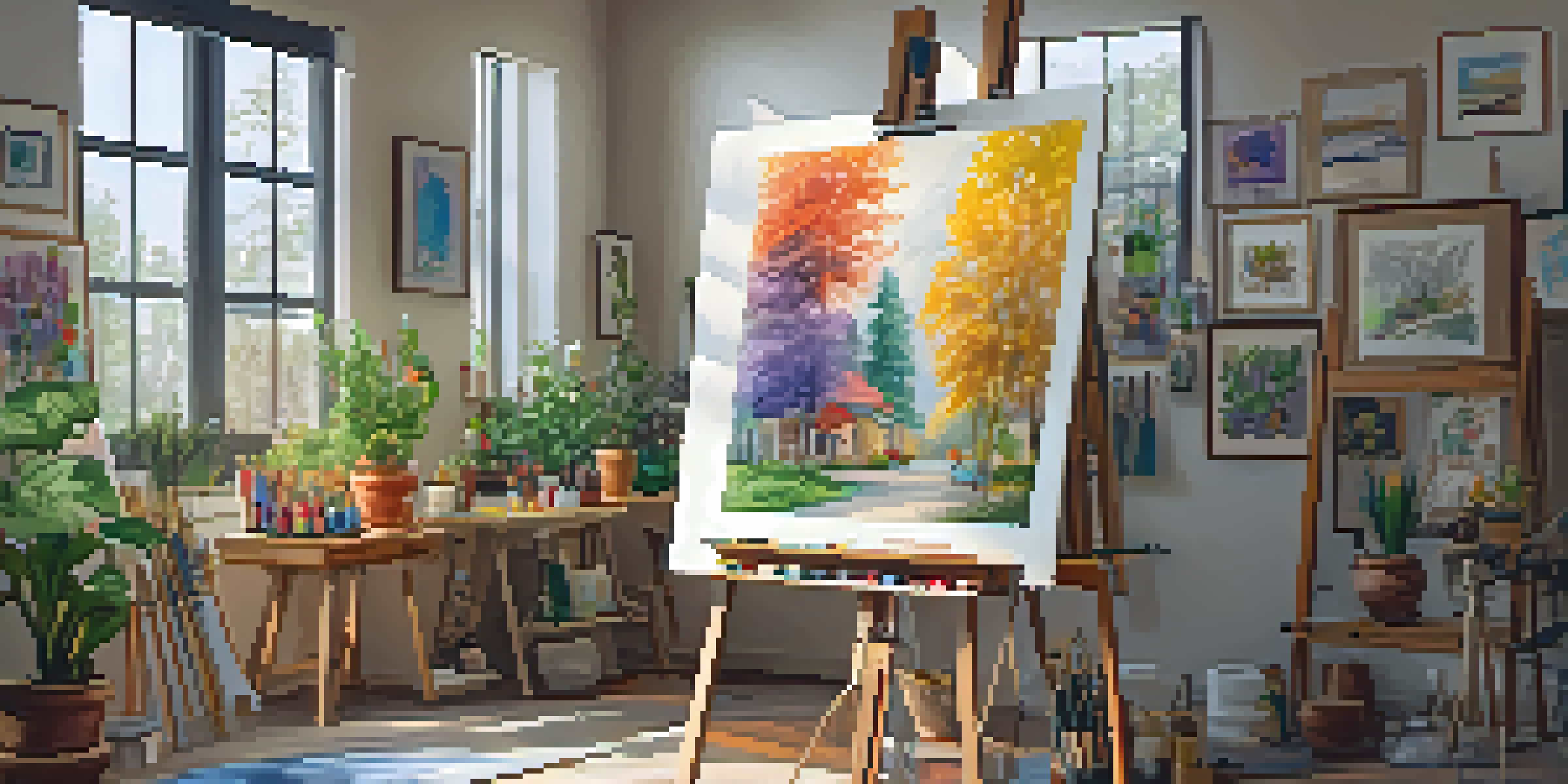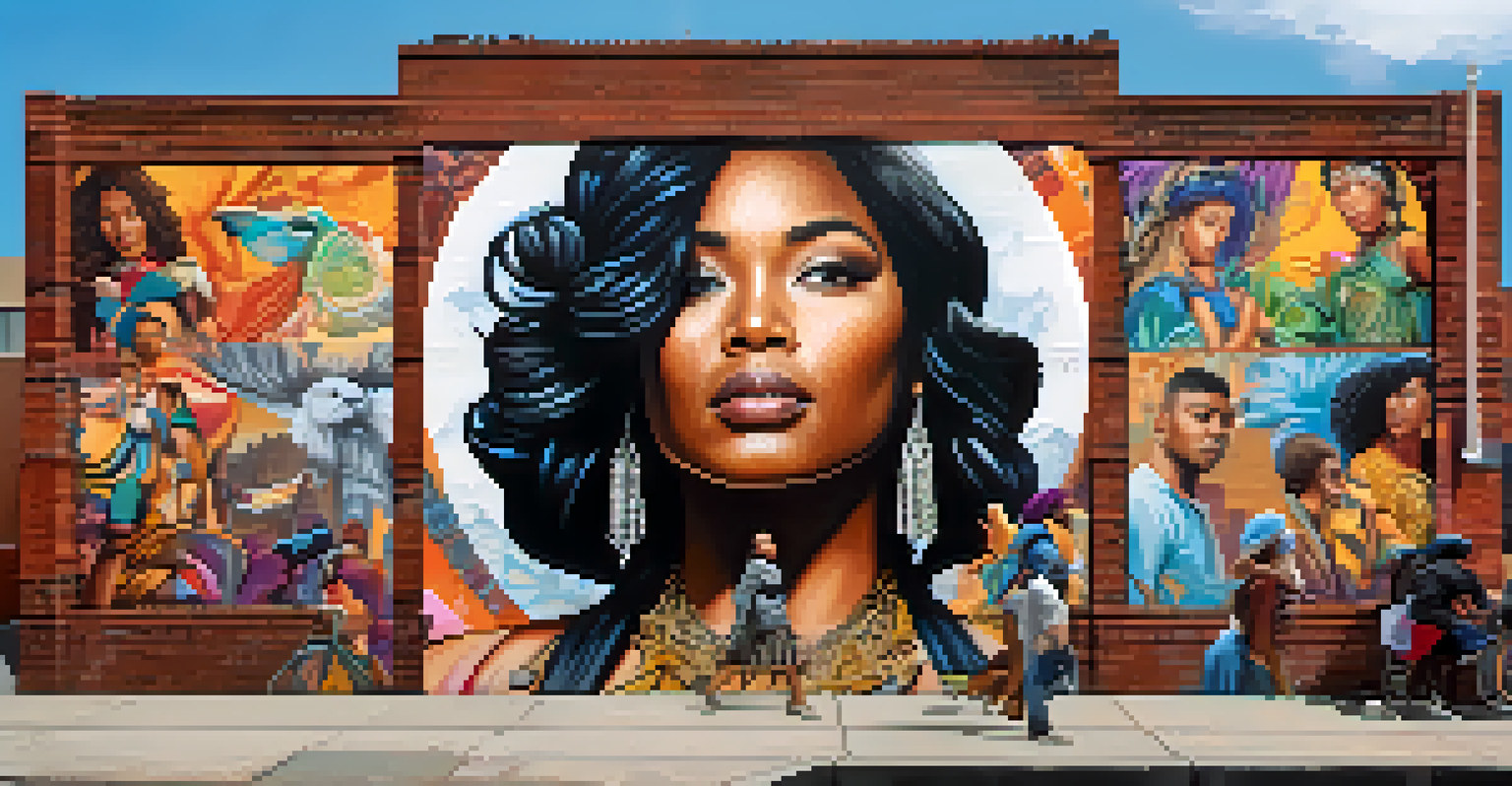The Rise of Women Artists: Breaking Barriers in the 21st Century

Historical Context: Women in Art Before the 21st Century
Throughout history, women artists have often been overlooked and underrepresented in the art world. Many talented women, like Artemisia Gentileschi and Georgia O'Keeffe, faced immense challenges in gaining recognition for their work. The societal norms of previous centuries often relegated women to the background, limiting their opportunities to showcase their artistic talents.
Women are the largest untapped reservoir of talent in the world.
Despite these challenges, many women continued to create powerful artwork, often using their art as a form of resistance. They broke traditional norms, paving the way for future generations of female artists. As we entered the 21st century, a shift began to take place, inspiring a new wave of women artists to rise and claim their space in the art world.
Today, we are witnessing a significant transformation in how women artists are perceived and celebrated. With more visibility and support, these artists are not only gaining recognition but also influencing the broader cultural landscape.
The Impact of Social Media on Women Artists
Social media has become a powerful platform for women artists to showcase their work and connect with global audiences. Platforms like Instagram and TikTok allow artists to share their creations instantly, bypassing traditional gatekeepers in the art world. This democratization of art has empowered many women to express themselves freely and gain visibility.

For instance, artists like Kelsey Montague have gained significant followings through their interactive murals shared online. This not only boosts their careers but also inspires other women to pursue their artistic passions. The online community fosters collaboration, mentorship, and support, helping to build a network of women artists who uplift one another.
Women Artists Breaking Barriers
Historically overlooked, women artists are now gaining recognition and visibility, reshaping the cultural landscape.
Moreover, social media helps challenge stereotypes and stereotypes surrounding women in art. By sharing their stories and experiences, these artists are reshaping narratives and inspiring change in the industry.
Diversity and Inclusivity in Contemporary Art
The contemporary art scene is increasingly embracing diversity and inclusivity, allowing a broader range of voices to be heard. Women artists from various backgrounds and cultures are stepping into the spotlight, enriching the art world with their unique perspectives. This shift is vital in breaking down barriers and expanding the definition of what art can be.
Art is a way of survival.
For example, artists like Zanele Muholi and Shirin Neshat use their work to address issues of identity, gender, and culture, pushing boundaries and challenging societal norms. Their art resonates with many, sparking conversations that promote understanding and empathy. This diversity not only enhances the art itself but also attracts a wider audience who can relate to these experiences.
As galleries and institutions begin to prioritize representation, we can expect to see even more women artists emerging and thriving. This change is essential for creating a more equitable art world that celebrates all voices.
Women Artists and the Gallery System
Historically, women have faced significant obstacles within the gallery system, often receiving less exhibition space and fewer opportunities compared to their male counterparts. However, a growing number of galleries are actively working to rectify this imbalance by prioritizing female artists in their programming. This shift is crucial for ensuring that women have equal visibility and representation.
Some galleries, like the New Museum in New York, have made a concerted effort to highlight the work of women artists through special exhibitions and initiatives. By showcasing diverse voices, these galleries are not only supporting individual artists but also enriching the cultural landscape. This trend is encouraging other institutions to reevaluate their practices and make meaningful changes.
Social Media Empowers Female Artists
Platforms like Instagram and TikTok have democratized art, allowing women artists to showcase their work and connect globally.
As women artists continue to gain recognition, they are also becoming more involved in the gallery system as curators and directors. This involvement allows them to shape the narrative around art and create spaces that celebrate female creativity.
The Role of Feminist Art Movements
Feminist art movements have played a pivotal role in amplifying the voices of women artists and challenging the status quo. These movements have sought to address gender inequality within the art world and society at large. By advocating for women's rights and representation, feminist artists have paved the way for the current generation of female creators.
Artworks from feminist movements often confront stereotypes and explore themes of identity, body politics, and empowerment. Artists like Judy Chicago and Cindy Sherman have used their platforms to promote social change and inspire others. Their influence is evident in the work of contemporary women artists who continue to push boundaries and challenge societal norms.
Today, feminist art movements are more inclusive, embracing intersectionality and addressing the experiences of women from diverse backgrounds. This evolution ensures that the fight for equality is ongoing and that all voices are heard in the art community.
Celebrating Women Artists in the Digital Age
As we navigate the digital age, the celebration of women artists continues to grow. Online platforms, virtual exhibitions, and digital galleries have made it easier for artists to share their work with a global audience. This access is crucial for women artists who may not have the same opportunities in traditional gallery settings.
Organizations like ArtGirlRising are dedicated to promoting female artists through online campaigns and exhibitions. These initiatives not only spotlight talented women but also foster a sense of community among artists and supporters. By leveraging technology, these organizations are reshaping how we celebrate and engage with art.
Diversity in Contemporary Art
A growing focus on diversity and inclusivity in the art world is amplifying the voices of women artists from various backgrounds.
The digital landscape also allows for innovative collaborations and cross-disciplinary projects, further enriching the art experience. As we celebrate women artists in this new era, we can look forward to a future where creativity knows no bounds.
Looking Ahead: The Future of Women in Art
The future of women in art is promising, as more opportunities arise for female artists to thrive. With increasing support from institutions, galleries, and the public, we can expect to see a continued rise in the visibility and influence of women creators. This momentum is essential for fostering a more inclusive and equitable art world.
However, the journey is not over. Ongoing advocacy for representation and support is crucial to ensure that women artists are not only seen but also celebrated. This includes continued efforts to address systemic barriers that have historically limited opportunities for female creators.

As we move forward, it's vital to support and uplift women artists by engaging with their work, promoting their exhibitions, and recognizing their contributions. Together, we can break down barriers and create a vibrant art community that honors the voices of all artists.